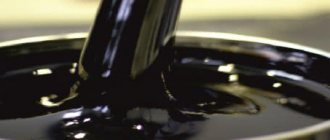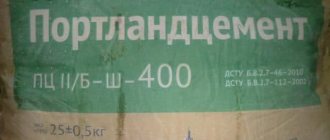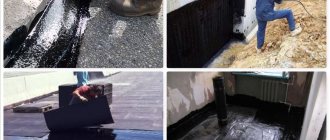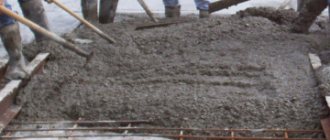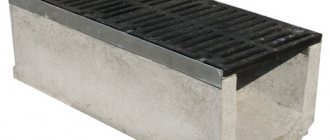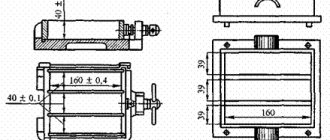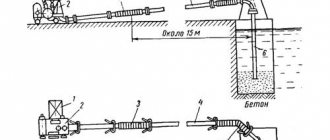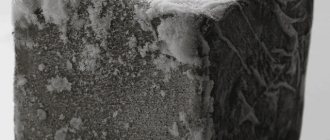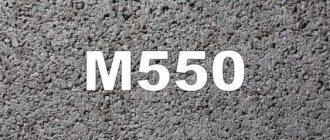What is bitumen?
The term “bitumen” is usually used in the following meanings:
- genetic - the concept of “natural bitumen” includes such minerals of organic origin as: gas, oil, rock tar, resins, malta, rock wax, ozokerite, asphalt, etc.;
- analytical - bitumen refers to substances that are extracted from rocks using organic solvents;
- technical - substances of natural and artificial origin used for road surfaces, waterproofing, preparation of mastics, varnishes, primers, etc.
Bitumen can be either natural or artificial. Petroleum bitumen is produced at oil refineries from oil that is subjected to fractional distillation. As a result, light products (gasoline, naphtha, kerosene), lubricating oils and other types of petroleum products are obtained. Oil residues (after selecting lighter weight fractions) are used as raw materials for the production of petroleum bitumen. During atmospheric-vacuum distillation of oil, residual bitumens are obtained, when oil residues are oxidized, oxidized ones are obtained, and when mixing residues formed during the distillation of oil, compounded bitumens are obtained.
The material has a hydrocarbon base and consists of carbon (70-98%), hydrogen (1-14%), oxygen (0.3-10%), sulfur (0.2-10%), nitrogen (0.1-3 %). Its most important properties are the ability to dissolve in organic solvents (gasoline, benzene, acetone, chloroform), the ability to burn, and high adhesion (the ability to stick to various surfaces). Depending on the composition and purpose, petroleum bitumen is classified into one of three classification groups:
- liquid – further divided into liquefied and residual;
- viscous;
- hard - further divided into ductile and brittle.
.
Properties of bitumen
Bitumen is absolutely waterproof. People have been using this quality since the Stone Age when equipping roofs, making dishes, using it as a binder in construction and decoration, using it in mummification, etc. Frost-resistant.
Bitumen is not critical to the effects of acid, alkaline and saline solutions, but is sensitive to solvents based on gasoline, acetone, and benzene.
To be classified as one or another type, the material is tested for: softening point and fragility; extensibility; viscosity and penetration depth; flash point, degree of adhesion to the metal surface and others.
The density of bitumen is determined with a special device - a pycnometer for solid and bulk materials in accordance with GOST 3900–85.
The viscosity of bitumen is determined according to the methodology set out in GOST 11503–74. The extensibility of bitumen is examined using a ductilometer in accordance with GOST 11505–74
Areas of use
The areas of destination for petroleum bitumen are very extensive:
- road construction;
- roofing industry;
- insulation and waterproofing;
- cable industry
- rubber and tire industry;
- batteries;
- varnishes and paints;
- metallurgy;
- coal briquette production;
- oil industry.
Application in individual construction
Bitumen is the most common material for waterproofing in individual construction. This waterproofing material gained its popularity, including when building a cellar with your own hands, due to its relative ease of use and low cost. In the construction of cellars and basements, it is used for adhesive waterproofing and gluing panels of waterproofing materials.
.
What is “shear stability” and why it should be taken into account
The main indicators of GOST 33133 are: dynamic viscosity at 60 °C, elongation and maximum tensile force at 0 °C, dynamic viscosity during aging. It is worth paying attention to such an indicator as “the coefficient of change in dynamic viscosity after aging.” Moreover, it is completely new; it has not been used in our country before. Today, all leading classifications in the world already use this indicator or are planning to introduce it in the near future.
Why is it necessary to take into account the temperature conditions of bitumen operation? In everyday life, for a person, a temperature difference of several degrees does not play a big role. For bitumen and bituminous binders used in road construction, the difference between 24 -28 or 30 - 34 degrees Celsius can be critical.
For example, if you heat a bitumen binder by only 5 °C, its shear resistance will drop by half. And if - by 10 -12 °C, then it’s already four times. By more than 15 °C - already eight times! That is, depending on the temperature, the same binder will show completely different properties. Therefore, being able to accurately determine the operating temperature and select bitumen binders with the properties that will “work” at these temperatures is a very important task.
When choosing bitumen, you must take into account the traffic load on the road. After all, all deformations and defects come from the duration and magnitude of the loads. If traffic moves slowly, the load time on the road increases. The longer and more intensely such a load acts on the road, the faster a rut will appear. Therefore, it is necessary to select bitumen exclusively for the load on this section of the road. Otherwise, this can lead to rapid destruction of the canvas and unscheduled repairs.
What brands of bitumen are there?
The use of bitumen grades for specific applications is regulated by relevant GOSTs. Below is a description of the main brands:
1. Viscous petroleum road bitumen is regulated by GOST 22245-90, in accordance with which the following grades of petroleum road bitumen are provided (the fraction numbers in the grade reflect the permissible limits for a given grade of change in penetration indicators at 25°C):
| Index | Standard value, depending on brand | ||||||||
| BND 200/300 | BND 130/200 | BND 90/130 | BND 60/90 | BND 40/60 | BN 200/300 | BN 130/200 | BN 90/130 | BN 60/90 | |
| Needle penetration depth (0.1 mm): | |||||||||
| — at 25 °C | 201-300 | 131-200 | 91-130 | 61-90 | 40-60 | 201-300 | 131-200 | 91-130 | 60-90 |
| — at 0 °C, not less | 45 | 35 | 28 | 20 | 13 | 24 | 18 | 15 | 10 |
| Softening temperature along the ring and ball (°C), not lower | 35 | 40 | 43 | 47 | 51 | 33 | 38 | 41 | 45 |
| Tensile strength (cm), not less: | |||||||||
| — at 25 °C | — | 70 | 65 | 55 | 45 | — | 80 | 80 | 70 |
| — at 0°С | 20 | 6,0 | 4,0 | 3,5 | — | — | — | — | — |
| Brittleness temperature (°C), not higher | -20 | -18 | -17 | -15 | -12 | -14 | -12 | -10 | -6 |
| Flash point (°C), not lower | 220 | 220 | 230 | 230 | 230 | 220 | 230 | 240 | 240 |
| Change in softening temperature after heating (°C), no more | 7 | 6 | 5 | 5 | 5 | 8 | 7 | 6 | 6 |
| Penetration index | -1.0 to +1.0 | From -1.5 to +1.0 | |||||||
To select the brand of road bitumen, you need to use the table data:
| Road climate zone | Average monthly temperatures of the coldest season (°C) | Brand of road bitumen |
| I | Not higher than -20 | BND 90/130,BND 130/200,BND 200/300 |
| II and III | -10 to -20 | BND 60/90, BND 90/130, BND 130/200, BND 200/300 |
| II,III,IV | -5 to -10 | BND 40/bO, BND 60/90, BND 90/130, BND 130/200, BN 90/130, BN 130/200, BN 200/300 |
| IV-V | Not lower than +5 | BND 40/60, BND 60/90, BND 90/130, BN 60/90, BN 90/130 |
2. Petroleum bitumen (BN) used for construction work is regulated by GOST 6617-76, in accordance with which three grades of petroleum construction bitumen are established - BN 50/50, BN 70/30, BN 90/10 (the numbers in the numerator of the fraction indicate softening temperature according to “K and Sh” (ring and ball), and in the denominator - indicate the average value of the limits of change in penetration at 25 ° C):
| Name | Standard for the brand | ||
| BN 50/50 | BN 70/30 | BN 90/10 | |
| Needle penetration depth (at 25 °C), 0.1 mm | 41-60 | 21-40 | 5-20 |
| Softening temperature of the ring and ball (°C) | 50-60 | 70-80 | 90-105 |
| Extensibility (at 25 °C), not less | 40 | 3,0 | 1,0 |
| Solubility (%), not less | 99,50 | 99,50 | 99,50 |
| Change in mass after warming up (%), no more | 0,50 | 0,50 | 0,50 |
| Flash point (°C), not lower | 230 | 240 | 240 |
| Mass fraction of water | Footprints | ||
BN 50/50:
softening temperature: about 50 0C;- properties: sticks well, flows easily, gradually floats (spreads) on a flat surface.
BN 70/30:
- softening temperature: 70-72 0C;
- properties: good adhesion, breaks into large pieces without splinters; most suitable for constructing waterproofing coatings.
BN 90/10:
- softening temperature: about 90 0C;
- properties: high adhesion, insensitive to high temperature, breaks with a hammer and forms fragments with a shiny surface.
Over time, the material loses some of its oil fractions, as a result of which it becomes hard and brittle. At low temperatures, a loss of elasticity also occurs, the material becomes rigid and brittle.
3. Petroleum roofing bitumens (BNK) are regulated by GOST 9548-74, in accordance with which three grades of roofing bitumen are established - BNK-40/180 (bitumen for impregnation), BNK-45/190 (bitumen for impregnation and production of covering bitumen) , BNK-90/30 (material for the covering layer), the numerator of the fraction in the brand indicates the average value of the softening temperature indicators according to “K and Sh”, and the denominator indicates the average value of the penetration indicators at 25 ° C:
| Name | Standard for the brand | ||
| BNK-40/180 | BNK-45/190 | BNK-90/30 | |
| Needle penetration depth (at 25 °C), 0.1 mm | 160-210 | 160-220 | 25-35 |
| Softening temperature of the ring and ball (°C) | 37-44 | 40-50 | 80-95 |
| Brittleness temperature (°C), not higher | — | — | -10 |
| Solubility in toluene or chloroform (%), not less | 99,50 | 99,50 | 99,50 |
| Change in mass after warming up, (%), no more | 0,80 | 0,80 | 0,50 |
| Depth of needle penetration at 25 °C in the remainder after warming up (% of the initial value), not less | 60 | 60 | 70 |
| Flash point (°C) not lower | 240 | ||
| Mass fraction of water, no more | Footprints | ||
| Mass fraction of paraffin (%), no more | — | 5,0 | — |
| Penetration index | — | From 1.0 to 2.5 | — |
.
Raw materials for bitumen production
Some quality indicators of bitumen used in the road industry as a binder in the production of asphalt concrete mixtures or for the preparation of bitumen emulsions, as well as for surface treatment devices, even if it complies with the requirements of the standard, require improvement for a number of reasons. Bitumen obtained by oxidation of raw materials at a temperature of 230–240°C (and sometimes more) is prone to aging, quickly loses its plasticity when the temperature drops and has insufficient adhesion to acidic rock materials, which are the most suitable because of their strength.
At the same time, axial and dynamic loads are rapidly increasing, and hence the requirements for the bearing capacity of roads and, accordingly, for the quality of asphalt concrete mixtures, which largely depends on the quality of the binder. For this reason, road workers at their bases have to improve the quality of bitumen by adding surfactants and polymer materials.
The technology of improving bitumen with additives has long been widely used in foreign practice, despite the fact that they use much higher quality bitumen, and even more so this technology is shown for us and not only because of the insufficient quality of the original bitumen. Unfortunately, in Russia the practice of long-term storage of bitumen still persists and this is not done in the best way, mainly in pit-type storage facilities, where it oxidizes during prolonged contact with air and is watered, not only by seeping groundwater, precipitation leakage through leaks in the shelter, but also by sorption of moisture from the air.
It seems that bitumen cannot be stored at all. In any case, in this way, before bitumen is supplied from storage to the supply tank of an asphalt mixing plant, it has to be evaporated. When heated for a long time in boilers with the manhole cover open (how else can one observe the evaporation process and prevent boiling and emission of foam?), bitumen largely loses the beneficial properties of the binder.
However, the widespread use of bitumen improvement or emulsion technology in asphalt plants is hampered by some problems that need to be addressed, otherwise the quality of the improved bitumen may be inferior to the original one. Such cases are not uncommon.
One of the problems is the instability of the composition and properties of the bitumen supplied for processing. It is a mistake to assume that the same composition recipe is applicable for any bitumen, for example, when preparing a polymer-bitumen binder or bitumen emulsion. Some will say this is obvious. Meanwhile, until recently, there was an order from the leadership of the road industry, according to which contractors are required to coordinate the PBB recipe with the Federal State Institution Rosdorkontrol before the start of the construction season. This, of course, is a misunderstanding that experts have been paying attention to for a long time, but which is still in effect. For example, a very informative article still contains a conclusion (paragraph 1, p. 50) about the need to “prohibit” the use of PBBs without prior approval of their compositions with the Federal State Institution “Rosdorkontrol”. Not only is it impossible to determine the compliance of the implemented recipe with the approved one based on the arbitration sample of the PMB, which makes the approval of the composition meaningless, the composition of the PMB may also be a technical secret of the manufacturer. The job of the said Office is to control the quality of the product and, if it meets the requirements, to certify it.
However, developing a rational composition recipe in a road laboratory takes a full shift at best, and sometimes more than one. If we take bitumen from the pit of a bitumen storage facility, where it leaks from a pit where it accumulated in the winter with deliveries from different refineries in layers, sometimes from different oils and different backgrounds, in a random ratio, then each filled container or bitumen tank is essentially a batch , for which you need to develop a recipe, which is hardly feasible.
To solve this problem at the asphalt plant, it is necessary to have a storage tank, thermally insulated and with heating elements sufficient to heat the entire accumulated portion to a temperature of 110–120 ° C and, for example, mix it by bubbling air from a compressor for the purpose of averaging. Then the batch can be considered all the bitumen in this storage tank, and its capacity should be determined by the program for the production of modified bitumen or bitumen emulsion.
In this case, recipe development would be a regular operation, such as every two or three weeks, which is acceptable. It is obvious that during the filling of such a storage container and mixing, as well as the selection of a composition recipe, no modified bitumen or bitumen emulsion is produced.
While road workers can somehow solve the problem of unstable properties of bitumen coming from its storage facility for technological processing, another problem has not yet found a solution. Road builders need different bitumen. To produce hot mix asphalt concrete, you need BND (or better yet BDU) bitumen, mainly grades 60–90 and sometimes 90–130. For the surface treatment device, bitumen is used with a needle penetration depth at 25°C of the order of 110–140×0.1 mm. Sometimes bitumen grade 90–130 is suitable, but often the bitumen must be diluted with tar. And at the same time, the quality of the binder deteriorates. After all, tar is not bitumen.
The same thing happens when bitumen is modified with polymers, which significantly increase the viscosity of the composition and it is often necessary to use plasticizers, for example, tar or industrial oil. Previously, road workers did not understand that the use of plasticizers makes it difficult to obtain high-quality PMB, and, accordingly, mixtures using them. In foreign practice, plasticizers are not used in the production of PBB. When preparing, for example, PMB for a surface treatment device, grade 140–160 bitumen is used, and when preparing PMB for hot mixes, grades 100–120 are used. Then, by dissolving the polymer in bitumen, PBB of grades 100–120 and 60–80, respectively, is obtained, which is what is required. But these are still bitumens of the mentioned grades: 140–160 and 100–120, and not mixtures of bitumen and tar, which are offered to us by refineries that use compounding technology.
The raw materials for the production of bitumen are tars from the primary distillation of oil and other products of secondary processes for processing oil residues (extracts from oil production, extracts from the deasphalting process, cracking residues, etc.), in which high-molecular aromatic compounds, resins and asphaltenes are concentrated. There is a known method for producing bitumen from weighted tar, which includes vacuum distillation of fuel oil at a residual pressure of the top of the column of 30–50 mm. rt. Art. with the production of weighted tar, 70% of which is mixed with organic additives until a nominal viscosity of 40–120 s at 80°C and a needle penetration depth at 25°C of 400–480⋅0.1 mm are achieved and subsequent oxidation of the prepared mixture in an oxidation column, with obtaining the target product. If necessary, it is possible to introduce up to 30 wt. into the target product. % weighted tar. The above-mentioned organic additives introduced into tar before oxidation include concentrates of polyaromatic hydrocarbons, such as extracts of selective purification of oil fractions, cracking residues, pyrolysis resin, darkened vacuum gas oil, asphaltites from the deasphalting process, etc. Oxidation of the prepared weighted tar is carried out with oxygen air in the oxidation column and standard conditions: temperature 240–270°C and excess pressure 0.005–0.3 MPa.
The disadvantages of this method are the additional operation of producing weighted tar and the introduction of organic components of various classes at the stage preceding oxidation, which significantly complicates the operation of the oxidation column (on heterogeneous raw materials) and production in general.
The closest in essential features to the proposed method is the method of producing bitumen by oxidizing weighted tar with a conditional viscosity at 80°C for at least 60 s without preliminary dilution to obtain construction bitumen as the target product with a softening temperature of at least 90°C. To obtain road bitumen, the oxidized component—construction bitumen with a softening point of at least 90°C—is compounded with a thinner and a plasticizer (all components in one mixer at the same time) to obtain road bitumen. Propane deasphalting asphalt is used as a diluent; various petroleum refining products can be used as a plasticizer, for example, an oil fraction that boils in the range of 450–520°C and an extract from selective oil purification. Compounding is carried out with the following ratio of components, mass. %: propane deasphalting asphalt - 25-40, plasticizer - 10-20, construction bitumen with a softening point of at least 90°C - the rest.
The known method solves the problem of obtaining high-quality road bitumen only from weighted raw materials. The method suggests using weighted tar with a viscosity of more than 60 s to produce road bitumen, which limits the raw material base for producing high-quality road bitumen. In addition, the disadvantage of the known method is the need to obtain overoxidized bitumen (at the oxidation stage in the oxidation column) with a high softening point, not lower than 90°C, which complicates the operation of the oxidation column due to increased coke formation.
The objective of the proposed invention is to expand the raw material base for bitumen production, improve the quality of bitumen, increase the frost resistance of bitumen while maintaining plasticity and resistance to thermal-oxidative aging processes, and increase the reliability of reactor equipment.
The problem is solved by oxidizing straight-run tar to overoxidized bitumen with a softening temperature of 60–90°C. Such overoxidized bitumen is obtained from standard raw materials using the technology existing at the Omsk Refinery for direct oxidation of straight-run tar in a column-type reactor, followed by additional oxidation in tubular-type reactors.
Overoxidized bitumen is like the structural framework of the future road bitumen - a concentrate of resins and asphaltenes. Next, the over-oxidized bitumen, with a softening point according to the CISH of 60–90°C, is compounded with the original unoxidized straight-run tar, propane deasphalting asphalt and an extract for selective purification of oils. Oxidation to a KIH of more than 90°C using the proposed method is impractical due to the increase in coking of the tubular reactor system. The degree of dilution of base bitumen depends on the depth of oxidation of the raw material, on the viscosity of the starting material and on the given grade of road bitumen. Thanks to the technical solutions incorporated in the installation, it is possible to simultaneously produce several grades of road bitumen from one grade of base bitumen in a flow mixing unit.
Compounding is carried out in 2 stages: at the first stage, overoxidized bitumen is mixed with unoxidized straight-run tar and/or propane deasphalting asphalt (the structural basis of commercial bitumen is created), when compounded, at the second stage, with the residual extract of selective oil purification, road bitumen of the required grade is obtained . Compounding is carried out with the following ratio of components, mass. %: propane deasphalting asphalt 0–25%, unoxidized straight-run tar 0–20%, extract of selective oil purification 0–15%, overoxidized bitumen with a softening point of 60–90°C - the rest.
The difference between the proposed technical solution and the known one is, firstly, that the raw material for the oxidation process is commercial straight-run tars with minimal requirements for quality standardization and unlimited requirements for the index of conditional viscosity at 80°C (VU80), which allows, regardless of the structural and group composition of straight-run tar after oxidation and compounding of the oxidized product to obtain commercial bitumen with improved extensibility and increased quality indicators after aging.
Another difference between the proposed method and the prototype is that in the claimed method the depth of oxidation is limited to the softening temperature range of peroxidized bitumen 60–90°C; deeper oxidation is accompanied by processes of destruction and compaction with the formation of excessive amounts of carbenes and carboids, which significantly deteriorate the quality of bitumen, especially its durability, while the yield of bitumen is also significantly reduced due to the formation of large quantities of black diesel fuel.
The claimed method also limits the concentration of propane deasphalting asphalt in commercial bitumen to less than 25% (25–40% in the prototype), and also regulates the order of mixing the components.
The chemical composition of tar is very complex; its individual components cannot be identified. It is traditionally accepted to analyze tar for the content of oils, resins and asphaltenes. The groups of compounds contained in them determine what products are formed during the oxidation process when producing commercial bitumen. The latter, in turn, determine the physicochemical, rheological, and, ultimately, operational properties of bitumen. There is information about the influence of one or another hydrocarbon additive in the original tar on the quality indicators of oxidized bitumen. However, systematic studies aimed at quantitatively assessing the influence of the content of certain components of tar on the properties of the oxidized product have not been carried out. Only qualitative information is provided on the effect of oils, resins and asphaltenes on the conditional viscosity of tar and on the physicochemical properties of oxidized road bitumen, depending on the level of viscosity of tar. Establishing quantitative relationships between the group hydrocarbon and chemical composition of the oxidation raw material - tar and the qualitative indicators of oxidized bitumen is a very interesting problem in scientific and practical terms.
Literature:
- Abdullin, A. I. Use of carbon black as an additive to road bitumen / A. I. Abdullin, E. A. Emelyanicheva // Bulletin of the Kazan Technological University. -2014,-No. 2.-S. 275–278.
- Abdullin, A. I. Modified bitumens for road construction / A. I. Abdullin // Bulletin of the Kazan Technological University. - 2014. - No. 4. - P. 185–188.
- Akhmetov, S. A. Technology of deep processing of oil and gas: textbook for universities / S. A. Akhmetov. - Ufa: Gilem, 2002. - 672 p.
- Vakhyanov, E. M. Justification of the optimal content of plasticizer in bitumen modified with crumb rubber / E. M. Vakhyanov, S. N. Shabaev // Bulletin of the Kazan Technological University. -2014.-No. 4.-S. 113–114.
- Grigorieva, I. G. Chemistry and engineering ecology: textbook / I. G. Grigorieva, Yu. A. Tunakova. — Kazan: Fatherland, 2015–242 p.
- Elagoleva, O. F. Technology of deep oil refining: a textbook for universities / O. F. Elagoleva, V. M. Kapustina. - Moscow: KolosS, 2007, - 400 p.
- https://asfaltmash.ru/nekotorye-tehnologicheskie-problemy-primenenija-bituma-v-dorozhnom-stroitelstve/
How to work with bitumen
Construction and roofing bitumens are traditionally widely used in construction for waterproofing and roofing works. Bitumen is heated in a boiler or bitumen cooker to a fluid state and applied in liquid form to a dust-free base with a spatula, brush, or poured and leveled with special combs (squeegees).
Bitumen cools very quickly, so the material is heated after preparing the base for applying bitumen.
Warming up bitumen
produced in a thick metal digester with a tight-fitting lid. The thickness of the walls of the boiler must be at least 4 mm, since the material will quickly burn in thin-walled containers. Before heating, the bitumen is cleaned from the packaging and split into small pieces; it is better to do this in the morning before the material softens. The resulting pieces are placed in a bitumen cooker (boiler), filling 2/3 of the volume.
Heating is done over low heat to ensure gradual and even heating. The bitumen is melted until a homogeneous mass is obtained, and when foreign impurities appear on its surface, they are removed with a metal sieve (for example, a tin can with holes punched in it with a nail) on a long stick. When heated, the material hisses and foams as excess liquid evaporates.
Heating temperature - from 160 to 200 °C. At a temperature of 160-170 °C, the material can be heated for 3 hours, and at a higher temperature - no longer than 1 hour. To control the temperature of the heated material, use a thermometer with a graduation scale of more than 200 0C.
At temperatures above 220 °C, the properties of the material deteriorate as coke forms in it. The appearance of green-yellow smoke and bubbles is a clear sign of overheating (the coking process is occurring).
When heated to 240 °C or more, the material can easily ignite. In this case, you must immediately close the boiler lid (cover the boiler with a sheet of metal) to extinguish the fire. When hardened, such bitumen will be brittle and quickly crack, so it can no longer be used.
The bitumen is heated until the mass becomes homogeneous and its surface is glossy, while thick gray smoke rises from it.
Consumption for waterproofing:
Bitumen, heated to a liquid state, is applied in a layer 1.5 - 2.5 mm thick. Consumption is 1.0 - 1.5 kg per sq.m.
.
Coverage of the use of petroleum road bitumen at the exhibition
The annual exhibition "Neftegaz", which takes place at the Expocentre Fairgrounds, highlights issues related to the leading industry of our country. The exhibition is one of the five largest manufacturing exhibitions in the world, which attracts special attention to it. This event provides a meeting platform not only for the largest companies in the oil and gas industry, but also for service and equipment suppliers, as well as specialists in this field.
The Neftegaz exhibition provides an opportunity to assess the state of the industry, study new technologies and trends, and use this platform to effectively solve industry problems. Since petroleum road bitumens are a product of the oil refining industry, the issue of their use is also discussed at the exhibition. Everything related to the production and use of various types of bitumen can be learned at this event.
Not only the production flagships of our country, but also the largest foreign companies take part in it. Traditionally, participants from China, the USA, Norway, Germany, Sweden, South Korea, France, Taiwan, Italy and Finland present their stands.
Safety precautions
Great care must be taken when working with hot bitumen to avoid burns. To prevent accidents, you must remember the following safety requirements:
- bitumens are flammable substances with a flash point of 220-300 0C;
- the minimum self-ignition temperature of construction petroleum bitumen is 368 0C;
- the boiler for heating (cooking) bitumen is installed on a leveled free area;
- When heating a boiler by fire, it is necessary to ensure that liquid bitumen does not get into the fire. To do this, the boiler is installed with a slight slope in the direction opposite to the firebox;
- a box of sand, shovels and a fire extinguisher are placed in the immediate vicinity of the boiler;
- When a small amount of bitumen catches fire, it is extinguished with sand, a foam fire extinguisher, or felt felt.
If
a fire develops when a product is spilled over a large area, the fire is extinguished with a foam jet; - in the process of cooking bitumen mastics, the rules for mixing bitumen of different grades are followed: after placing it in the boiler, melting the BN-Sh bitumen and stopping the formation of foam, bitumen of higher grades can be added;
- dry pieces of bitumen are lowered into the digester along the side of the boiler to avoid splashes;
- it is necessary to ensure that no water, snow or ice gets into the digester;
- No third grade bitumen should be added to molten bitumen. This can cause a lot of foaming, causing the contents of the boiler to splash out;
- the boiler cannot be loaded to more than two-thirds of its volume;
- When working with hot bitumen and bituminous mastics, it is necessary to wear canvas gloves and suits, as well as glasses and leather boots.
Petroleum construction bitumen is indispensable for waterproofing self-built cellars and basements. When purchasing material, remember that the guaranteed shelf life is one year from the date of its production.
Tweet
Share
{lang: 'ru'}
Selecting the optimal bitumen and bitumen binder
So what's the problem? The mistake most often lies in the fact that the selection of bitumen is carried out without taking into account the temperature and transport characteristics of the road.
If we turn to the legislation, today a big advantage is that in the Russian Federation and abroad there are already technologies for selecting the optimal grades of bitumen and bitumen binders, taking into account these indicators. Thus, in the Technical Regulations of the Customs Union, the use of road bitumen is regulated by GOST 33133. It includes two types of parameters. Basic, mandatory for use in all CU countries, and additional ones - they are regulated separately in each CU country.
In the Russian Federation, the use of additional indicators and standards for them are not currently regulated. This plays a rather negative role; it turns out that GOST 33133 is not used to its full extent in the practice of Russian road workers.
Now many are saying that at the legislative level it is necessary to develop an industry document that will determine those additional indicators that will be mandatory for use in the Russian Federation. Also, this document should establish rules for selecting bitumen grades depending on climatic conditions, operating conditions, and transport loads.

